Deborah J. Ross's Blog, page 16
September 22, 2023
Book Review: A New Shapeshifter Novel from Samaire Wynne
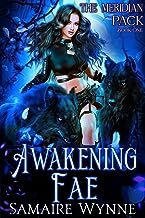 Awakening Fae: A Fated Mates ~ Wolf ShifterMagical Adventure (The Meridian Pack Book 1) by Samaire Wynne (BlackRaven Books)
Awakening Fae: A Fated Mates ~ Wolf ShifterMagical Adventure (The Meridian Pack Book 1) by Samaire Wynne (BlackRaven Books)“It’s good to read outside one’s familiarity zone” isoft-quoted advice. Usually, it means to try something darker, grimmer, andgrittier than usual. But when I’d had my fill of dark/grim/gritty/depressingtales about sociopaths I really didn’t care about, I happily agreed to take alook at Samaire Wynne’s new wolf shifter novel. I dove into it withoutpreconceptions and soon found it to be not only romantic in the best sense but alsodelicately layered.
Cameron, a foster kid about to age out of the system, isthrown into the world beyond the mundane when a puppy falls from the sky. Iknow what I’d do—everything I could to save it! In Cameron’s case, although ittakes her a while to realize how she’s done it, this involves reachingout with a magical talent she had no previous idea she possessed.
Despite being forced to grow up too quickly when faced withan uncertain future, Cameron is still half a child. She has some, but by nomeans all, of the skills she’ll need to survive in the outer world. She’s gotthe grades but not the money for college; her foster parents do their lovingbest but cannot afford to keep her once she passes the age cutoff. The authorperfectly captured Cameron’s loneliness and insecurity about the future andtransforms it into loving protectiveness. In bonding with the puppy, Cameronplaces the welfare of another before her own, an essential step in growing up.
As Cameron encounters the puppy’s wolf shifter pack and herfirst terrifying encounter with the Nightmare Fae that are now stalking her,she embarks upon a journey into a new world of reincarnating wolfshape-shifters and magic. Much of what she learns comes from the wolf shifterpack. She struggles to define and understand her place among them. Often, theirunqualified acceptance of her is puzzling, as are the gaps in theirexplanations. Later, it’s revealed that the shifter pack recognizes Cameron asa rare, immensely powerful Moon Fae, which is why they treat her with reverenceand take on the responsibility of her education. Like a reader faced with toomuch exposition, Cameron is handicapped in her ability to understand it all atonce, but even more so to put together the new relationships with her changingabilities—and her rapidly evolving identity. Being a normal human teenager isdifficult enough, not knowing who you’ll be or what you’ll feel from one day tothe next (thank you, hormones!). Added to that, Cameron as a Moon Fae ischanging—awakening, as the title indicates. As the story progresses,Cameron matures in her understanding of her new world and herself.
Underlying the supernatural elements and slow-burn romanceis a beautifully rendered portrait of a family-of-the-heart, and I think thisis what gives this story its emotional depth. As Cameron herself puts it:
Me, who had fleetingconnections to a dozen foster parents; me, who had never had a real family; me,who had just two black trash bags to hold every last bit of my life andbelongings when I moved from foster family to foster family. I had finallyfound a family that cared about me. And the monsters had risen up, camouflagedin the most devious, deceptive way, and had descended on us and ravaged them.
The world of the Meridian Pack is an interesting blend of wolfshifters, fae, reincarnation, fated mates, teenage sexuality, nightmaremenaces, action, and rational discussion. The author draws a distinctionbetween wolf shifters, shapeshifters who transform into the form of a large wolf,as opposed to werewolves (as in the Underworld movies) and which appear in Book2 of The Meridian Pack series. One of the more fascinating aspects of wolfshifter lore is the rate of aging; handsome Asher appears to be in his 20s, alittle older than Cameron, but is in fact only much younger, with predictableand sometimes humorous consequences.
Although there’s plenty of dramatic (and romantic) tension, Awakening Fae: AFated Mates often has an almost cozy quality. There was plenty to keepme turning pages but not enough to compel me to stay up all night. As I waspuzzling this over, I attended a webinar about what keeps readers engaged. Onething that stood out for me was the importance of how the author makes youfeel. That is based in the consistency and reliability of the readingexperience, conveyed through the implied contract between author and reader. Theauthor says, in effect, “In exchange for your time (and your trust), I promise thiskind of story.” Part of this offer is conveyed through authorial voice, butpacing, character development, and more subtle aspects of story-telling arejust as important. In order to repay the reader’s trust, the author had bettercome through. Wynne’s strong, sure command of these elements means the readercan relax into the story journey, knowing that whatever the ups and downs ofdramatic tension and plot twists, the reading experience will unfold aspromised, consistent and true.
Fans of Wynne’s other urban fantasies will love this one.It’s also a great place to start, especially if wolf shifters, fae, andcoming-of-age stories are your jam. It's available now here and on Kindle Unlimited.
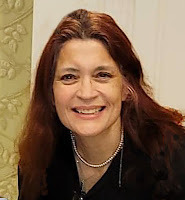 Samaire Wynne is a Puerto Rican author of over 20 novels in variousgenres, including horror and urban fantasy. She is Editor in Chief of BlackRaven Books. She has been writing professionally for over 11 years.
Samaire Wynne is a Puerto Rican author of over 20 novels in variousgenres, including horror and urban fantasy. She is Editor in Chief of BlackRaven Books. She has been writing professionally for over 11 years.A longtime Californian, you can find her skulking about in southernVirginia. If you were to visit her at twilight, she might serve you flower teaor butter whiskey on her back deck. If she excused herself and strolled intothe forest, you might be tempted to wander after her. Past a stream, you’d seea stone well at the edge of her property, and you might hear voices coming fromdeep inside.
If you were to trip and tumble down the embankment, youmight be stolen away by faeries keen to offer you a cookie or a bit of mead ina flower cup.
And if you were to drink it, you’d awake to find that ahundred years had passed...
Next Monday, I'll be interviewing Samaire here on my blog. Don't miss it!
September 15, 2023
Short Book Reviews: The Haunted Forest Takes Revenge
SmallAngels, by LaurenOwen (Random House)
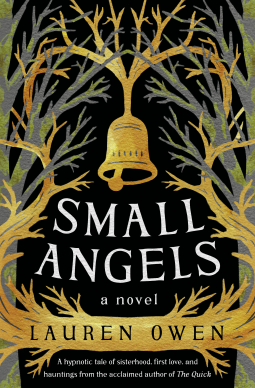
The charming English village on the edge of a forest, equallycharmingly named Mockbeggar, looks peacefully bucolic on the surface. Even theghost stories and legends seem quaint when told in the sunshine. And if some ofthe villagers take such tales seriously, that just adds to the allure. Or soChloe thinks when she arrives at the place that Sam, her husband-to-be, grew upin, excited to plan her dream wedding in the tiny church called Small Angels.But for Kate, Sam’s sister, the church, Blanch Farm, and especially the woodshold the memories of darkness and terror. Chloe inadvertently awakens theterror that has lain quiet for most of a generation. The woods are no longersafe…and they never were. The Gonne family, who have pacified the phantoms ofMockbeggar, is dispersed and only Lucia—called “the bad child”—remains.
Through multiple narrators and time lines, the story movesforward to its increasingly dark climax while revealing the past events thatcreated the looming disaster. At times, I didn’t like any of them, although Idesperately wanted them to find a way through their living ghost story. Thenend was both unexpected and deeply satisfying. I love stories where the conflictis resolved through compassion, understanding, and integrity. Small Angelsdelivered such an ending to perfection.
September 11, 2023
Auntie Deborah's Writing Advice, September 2023 Edition

Whatwould you do if you found out that someone had stolen your idea for writing abook and published it under their name?
First of all, ideas can’t be copyrighted, but I must add—withemphasis—that there are vanishingly few original ideas. What makes a bookuniquely yours is what you do with that idea. The vision andskill in execution that make it personal.
So what would I do? I’d cheer them on for having a great idea and forhaving gotten it in print. And then I’d write my own interpretation.
The best short story rejection I ever received was from a prestigiousanthology. The editor loved my story but had just bought one on the same theme(mothers and cephalopods, although mine was with octopodes and the other withsquid)—get this, from one of my dearest friends, a magnificent writer. Did Isulk? Did I mope? No, I celebrated her sale along with her! And then sold mystory to another market.
In other words, be generous. If you do your work as a writer, this won’tbe the only great idea you get.
Howcan you tell if a book needs an editor or a proofreader?
It does. Trust me on this. It doesn’t matter how brilliant the story isor how many books you’ve written. None of us can see our own flaws, whetherthey are grammar and typos or inconsistent, flat characters or plot holes youcould drive a Sherman tank through. Or unintentionally offensiveracial/sexist/ableist/etc. language. Every writer, for every project, needsthat second pair of skilled, thoughtful eyes on the manuscript.
How doI get a self-published book into libraries?
If your book is available in print, the best way is to use IngramSparkand pay for an ad. Libraries are very reluctant to order KDP (Amazon) printeditions. Same for bookstores.
If your book is digital only, put it out through Draft2Digital (D2D),which distributes to many vendors, including a number that sell to libraries.
Submit review copies to Library Journal. Consider paying for an ad ifyour budget allows.
Now for the hard part: publicizing your book to libraries. Besidescontacting local libraries, assemble a list of contact emails for purchasinglibrarians (there may be such a thing already, so do a web search). Write adynamite pitch. Send out emails with ordering links.
Is itbetter to title my chapters, or should I just stick to numbering them?
There is no “better.” There are conventions that change with time. Dowhat you love. Just as titles vs numbers cannot sell a book, neither will theysink a sale. If your editor or publisher has a house style, they’ll tell youand then you can argue with them.
That said, as a reader I love chapter titles. As an author, I sometimescome up with brilliant titles but I haven’t managed to do so for an entirenovel, so I default to numbers. One of these years, I’ll ditch consistency andmix and match them. Won’t that be fun!
September 8, 2023
Short Book Reviews: A. C. Wise Redeems Captain Hook
Hooked, by A.C. Wise (Titan)
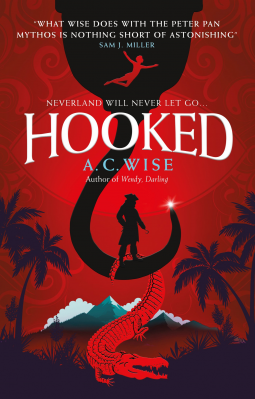
Once invited, always welcome.
Once invited, never free.
Neverland is not a safe place but not for the reasons givenin the books and movies. It’s a poison in the blood, an addiction whose singletaste changes a person forever. A long time ago, a malevolent eternal childsnatched a young man from his English home and transformed him into an immortalvillain: Captain Hook. Never able to win against Peter Pan and always at themercy of the menacing crocodilian beast, Hook’s world has become oneblood-soaked death after another. Then a slowly evolving relationship with hisship’s surgeon awakens memories of the man he used to be, a man capable ofgoodness, self-sacrifice, and even love. After discovering a door through thesky, Hook and his surgeon return to London, living in the shadows and always fearingthe return of the beast and the darkness that lurks just beneath the surface ofhis mind. On the eve of World War II, a murder throws Hook together with WendyDarling and her grown daughter, and it’s only a matter of time before Neverlandsinks its claws into them again.
The narrative style is intense, dark, and eminentlyaccessible. Moving from one timeline to another, the story unfolds as a spiral,layering connected events, character journeys, and emotional resonances. Iespecially admired how the author offers understanding without excuses forHook’s violent deeds. Like other survivors of horrendous abuse, Hook is stillresponsible for his actions. He is what Peter Pan made of him—thequintessential adversary. He is also what he then makes of the ashen dregs ofthe man he might have been.
I missed Wendy, Darling, A. C. Wise’s previous novelbased on Peter Pan, but I never felt the lack. It’s the mark of askillful writer to create a sequel (or several) that stand so solidly on theirown, no previous experience is required. Instead, Hooked captured me sothoroughly, I’m ready to grab anything else I can find by the author.
September 1, 2023
Short Book Reviews: Thoughtful Sociological SF from Rachel Swirsky
January Fifteenth, by RachelSwirsky (Tordotcom)
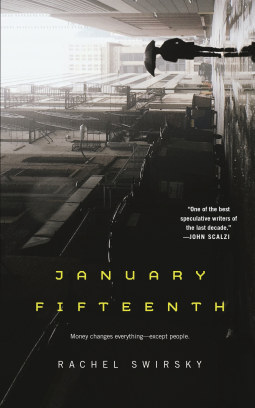
Rachel Swirsky is one of the most thoughtful, provocative writers in contemporary science fiction. Her work embodies the human experience with all its pathos and glory, without ever preaching or descending into hyperbole. In January Fifteenth, she begins with asking “What if…?” What if Universal Basic Income happened? Who would it help, and how? Which problems would it solve, and which make worse? And how many lives would be untouched, because some problems cannot be solved by money?
Instead of an exposition-laden diatribe, Swirsky takes us inside the lives of four very different women. With compassion but notably without judgment, she plays out their days before, the day of, and after the annual UBI payouts.
Hannah is a middle-aged mother fleeing an abusive ex-spouse, an escape made possible by her monthly UBI. But “doing a geographic” cannot solve her well-founded fears of discovery, nor can it take the place of unexpected and effective help.
Janelle is a single, Black, struggling journalist wrestling with a rebellious, activist younger sister. Her life has become an unending drudge of barely making ends meet by interviewing strangers about UBI, even though her sister and—formerly—she herself opposed the policy.
Sarah, a pregnant teenager, a prisoner of a religious cult that practices child marriage, polygamy, and keeping women poor and ignorant, trudges to the UBI disbursement center. Her money will not buy her freedom, even if she could imagine such a thing, for it belongs her elderly husband.
Finally, Olivia parties with her wealthy, entitled college student friends, vying for who can spend their UBI in the most wasteful fashion. Her life is a parade of drug-induced visions, superficial relationships, and fear that her parents will find out she’s flunked out. On the surface, she is the most financially well-off character, yet by far the most enslaved.
January Fifteenth is science fiction at its best: stories that are challenging, accessible and, most of all, human.
Recommended.
August 26, 2023
July's Newsletter and what lies ahead
Here's my newsletter for July, which my subscribers got to read last month. If this content appeals to you, please subscribe here. Or here: https://tinyurl.com/yydem5yw
Alas, the harmonicas have gone to a good home. Don't you wish you'd subscribed <g>?
 Ah, summer...This spring has been exceptionally hectic for me personally, but that seems to be drawing to a close. I'm settling into a summer of Clearing Things Up and digging into revisions of the next Darkover novel, Arilinn. I'm feeling bemused by my process. I receive editorial notes (this book and the last, The Laran Gambit, were edited by the amazing Judith Tarr), I look them over...and have the literary equivalent of a panic attack.
Ah, summer...This spring has been exceptionally hectic for me personally, but that seems to be drawing to a close. I'm settling into a summer of Clearing Things Up and digging into revisions of the next Darkover novel, Arilinn. I'm feeling bemused by my process. I receive editorial notes (this book and the last, The Laran Gambit, were edited by the amazing Judith Tarr), I look them over...and have the literary equivalent of a panic attack.Ack, I can't possibly fix all this! What was I thinking? Aliens must have eaten my brains! It's hopeless...
And then, armed with my trusty notebook, I get to work. And, as if by magic, ideas pop into my brain. They not only pop, they explode...they procreate with abandon. I look back and think, I've written how many novels now and this still happens...and I still love the way things come together in revision every single time. You'd think I'd remember that, right?What's in this newsletter?
Harmonicas free to a good home!A musical giftWriting craft: Who needs dialog?Audiobook links for my booksCute cat pic
 In cleaning out a drawer (or five), I came across these cute little Hohner mini-harmonicas. They're about an inch long, with a silvery finish and a loop for a carrying cord. I have no recollection of where they came from, but they're too sweet to not enjoy. I've seen them on Etsy for up to $40 but would rather give them away. If you'd like one, email me at deborahjross at gmail dot com. I'll pay domestic postage.
In cleaning out a drawer (or five), I came across these cute little Hohner mini-harmonicas. They're about an inch long, with a silvery finish and a loop for a carrying cord. I have no recollection of where they came from, but they're too sweet to not enjoy. I've seen them on Etsy for up to $40 but would rather give them away. If you'd like one, email me at deborahjross at gmail dot com. I'll pay domestic postage.

A Musical Gift
Speaking of music, my friend and neighbor, musician Karie Hillery, has a new album out, "Meanderings" contains instrumentals with keyboards and guitar. She describes it as "a musical conversation between hearts - songs that flow through every emotion, carrying the listener on a beautiful journey inward." Her musical partner and BFF Chris Pinnick is a world-class musician who has played with the band Chicago, on Herb Alpert’s ‘Rise,” and with The Spencer Davis Group, to name just a few.
Info and samples on her website. And you can listen to a free song here. I encourage you to take a listen. I find her music calming and uplifting, a welcome antidote to stressful days.
Who Needs Dialog?
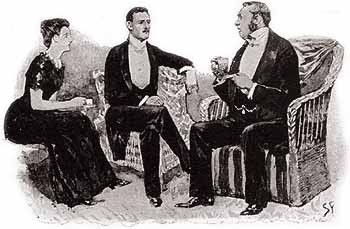
I love to “talk shop” with other writers. I learn so much about my own process and my weaknesses because it’s always easier to see the flaws – and the strengths! – in someone else’s work. Recently, I had the mirrored experience of serving as a beta reader for another writer’s novel and receiving similar feedback on one of my own. The thematic similarities and differences between the two very early versions of the stories are irrelevant. What fascinated me was that we used dialog in diametrically opposed ways in our story construction: my friend’s rough draft read like a screenplay, and mine had comparatively little conversation. We’ll both end up with balanced manuscripts, but we’ve started from opposite places. Dialog, which is the transcription of what each character says, rather than a summary in narrative, is one of a writer’s most powerful tools. It’s also one that’s easy to abuse, either by using it too much or too little, or asking it to perform functions in the story that it’s not well-suited for. Certainly, it’s possible to tell a story entirely in dialog form, just as it’s possible to write a story entirely in narrative with zero dialog. Most stories fall in the comfortable middle zone, especially if they involve more than one character capable of speech. When we write prose stories, we can choose to show action in a variety of ways, narrative being one, dialog another. Dialog isn’t very good for showing events at a distance; characters can be discussing those events or relaying them, but both are “off the scene” and hence have less immediacy. On the other hand, if the emphasis is on the reaction of the characters to those events, dialog can be of immense help. One of the strengths of dialog is that if skillfully handled, it can give us a window into a character’s inner state without being in that character’s head. Screenplay writers know this and use dialog to reveal character, to heighten and resolve tension, to create conflict, and to further the plot. Which brings me to one of the things I saw in my friend’s manuscript. She came to her story with “screenwriter’s mind.” She used dialog not only to convey the content of conversations (relationship building, changing, exchange of information between characters, etc.) but to sketch out the action that she would later fill in with narrative. I’m a bit in awe of this since what little I know of screenplay writing has thoroughly impressed me with what a high-wire act it is to use only dialog and highly abbreviated descriptions of scene and action to tell a story. I, on the other hand, used bits of narrative as shorthand for the conversations that will be developed in revision. If anything, my rough draft was too focused on the inside on my protagonist’s head, not what she was doing or saying. One of the consequences was that other characters are suggested rather than developed, whereas in my friend’s draft, her extensive use of dialog has done much of this important work. There isn’t any one right way to weave dialog into a story, any more than there is one single right way to write. The more options we have, the more tools we have in that magic box of tricks, the better we will be at telling a range of stories. So here’s a challenge for your next story project. If you’re like my friend, a writer who uses dialog heavily to set the major blocks of her story, challenge yourself to write that first draft with as little dialog as you can. Can you do it with none? What are the circumstances under which you absolutely have to put it in? If you’re like me, a writer who puts in just a bit here and there, challenge yourself to use dialog to create the backbone of the plot, to introduce and reveal character, to heighten and resolve tension, without using your normal narrative techniques. My guess is that either way, the process will be both uncomfortable and revealing. Have you been relying on dialog as a preferred and therefore easy way of transcribing the movie between your ears? Or have you regarded it as a frill, lightweight chit-chat instead of an essential foundation of the story? The good news is that no matter where we start, whatever our natural propensities and habit, it really doesn’t matter what order we weave in and shift around the elements of narrative and dialog. What matters is that final draft when everything has come into balance and the story shines!

Audiobook Links
I love listening to stories read aloud! At bedtime, I fall asleep during all but the most dramatic scenes. In fact, it's a family tradition! But I also enjoy audiobooks while I am cooking or cleaning (or on the exercise bike, or walking alone). I also love sharing my own stories, whether read aloud for your pleasure by me or a professional narrator.
All my Darkover collaborations are available through Recorded Books, so they're listed on many venues. Some of my original novels were put out through Audible and here are the links. I have a few coupons for free downloads of my original books. Let me know if you'd like one. They're also free to Audible members.
Jaydium
Northlight
The Price of Silence
Azkhantian Tales
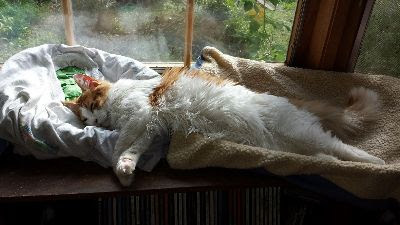 After a long, cold, wet winter, summer has arrived with a vengeance! Sonja impersonates a Melted Cat, draped fetchingly across two cat baskets.
After a long, cold, wet winter, summer has arrived with a vengeance! Sonja impersonates a Melted Cat, draped fetchingly across two cat baskets.
August 25, 2023
SFWA's Emergency Medical Fund signal boost

In light of the recent fire disaster in Maui, we want to encourage members to share news of our Emergency Medical Fund (EMF) with other speculative fiction writers. The fund is intended to provide short-term assistance to writers who may be having difficulty paying for their medical expenses due to emergencies interfering with their ability to write, which is unfortunately a circumstance that many Maui-based writers are currently dealing with.
Genre writers do not need to be SFWA members to apply for relief from the EMF, but the money can only be used for medical expenses not covered by insurance. Co-pays are eligible for EMF funds. Questions about and requests for assistance can be directed to emf@sfwa.org.
https://www.sfwa.org/about/benevolent-funds/emergency-medical-fund/
August 21, 2023
Repost: Maternal Mortality Rates Rising, Especially for Women of Color
Tthis article first appeared in The Conversation and is reprinted here, with permission (see below). It's such an important issue. Following four miscarriages, I had a difficult pregnancy and preterm labor. With skilled obstetrical care, I had a healthy, full-term baby (who is now a medical doctor delivering babies herself). But...
I am white and I had excellent health insurance. I want to cry and scream and march in the streets at the blight of Black, Hispanic, and Native women who love their unborn babies just as much as I loved mine. This discrepancy is injustice. This is racism.
And now I hear that OBs are fleeing states with horrendous reproductive rights restrictions, terrified that if they treat problem pregnancies that do not end well (see aforementioned miscarriages), they will face criminal charges and loss of their medical licenses. That means rich white women will get the same good medical care...and poor women, largely women of color, will die.
Will die.
Let that sink in. Now read the article. Each one of those statistics is a woman who loves and is loved. A family. A community.
Risk of death related to pregnancy and childbirth more than doubled between 1999 and 2019 in the US, new study finds Maternal death rates are higher in the U.S. than in other high-income countries. Tetra Images/Getty Images Laura Fleszar,
University of Washington
; Allison Bryant Mantha,
Harvard University
; Catherine O. Johnson,
University of Washington
, and Greg Roth,
University of Washington
Maternal death rates are higher in the U.S. than in other high-income countries. Tetra Images/Getty Images Laura Fleszar,
University of Washington
; Allison Bryant Mantha,
Harvard University
; Catherine O. Johnson,
University of Washington
, and Greg Roth,
University of Washington
Black women were more likely to die during pregnancy or soon after in every year from 1999 through 2019, compared with Hispanic, American Indian and Alaska Native, Asian, Native Hawaiian or other Pacific Islander, and white women. That is a key finding of our recent study published in the Journal of the American Medical Association. The risk of maternal death increased the most for American Indian and Alaska Native women during that time frame.
Maternal deaths refers to death from any cause except for accidents, homicides and suicides, during or within one year after pregnancy.
Notably, maternal mortality rates more than doubled for every racial and ethnic group from 1999 through 2019. Most maternal deaths are considered preventable because, in the U.S., maternal deaths are most often caused by problems that have very effective treatments, including bleeding after delivery, heart disease, high blood pressure, blood clots and infections.
Previous research has focused on high rates of maternal mortality in the Southern U.S., but our results showed that there are high-risk populations throughout the country.
For Black women in 2019, the states with the highest maternal mortality ratios – meaning the proportion of maternal deaths per 100,000 live births – were Arizona, New Jersey, New York and Georgia, along with the District of Columbia. Each had a maternal mortality ratio greater than 100 for Black women. In comparison, the national maternal mortality ratio for all women in the U.S. was 32.1 in 2019.
Among American Indian and Alaska Native women, the states with the largest increases in maternal mortality between the first half of the time period (1999-2009) and the second half (2010-2019) were Florida, Kansas, Illinois, Rhode Island and Wisconsin. In each of these states, risk of maternal death increased by more than 162%. Across the whole U.S., maternal mortality for American Indian and Alaska Native women was higher in 2019 than in all other years. Some individuals other than women, including girls, transgender men and people who identify as nonbinary, are also at risk of maternal death.
[image error] Why it mattersIn order to prevent maternal deaths in the U.S., it’s crucial to understand who is most at risk. Prior to our study, estimates of maternal mortality for racial and ethnic groups within every state had never been released.
The U.S. has a high rate of maternal mortality compared to other high-income countries, despite spending more per person on health care. Disparities in maternal mortality have persisted for many decades.
Because most maternal deaths are preventable, interventions have the potential to make a significant difference. Better prevention of related events, such as preterm birth, is also necessary. We hope that our research continues to help policymakers and health care leaders put solutions in place to better prevent these deaths from happening.
Recently, U.S. Democratic Senators Cory Booker and Bob Menendez of New Jersey, Raphael Warnock of Georgia, and Alex Padilla of California reintroduced the Kira Johnson Act to improve maternal health outcomes for racial and ethnic minority groups and other underserved populations, citing our study.
What’s nextWe would like to investigate how the most common causes of maternal death, such as blood clots, high blood pressure and mental health issues, are contributing to the overall estimates.
Understanding these trends will help clinicians and policymakers tailor solutions to be as effective as possible.
Our study did not include data from the pandemic years. So far, maternal mortality has only been reported at the national level for those years, but reports suggest that maternal mortality rates have increased since the start of the COVID-19 pandemic and that racial disparities have only gotten worse.
The Research Brief is a short take about interesting academic work.

Laura Fleszar, Public Health Researcher at the Institute for Health Metrics and Evaluation, University of Washington; Allison Bryant Mantha, Associate Professor of Obstetrics, Gynecology and Reproductive Biology , Harvard University; Catherine O. Johnson, Research Scientist in Public Health, University of Washington, and Greg Roth, Associate Professor of Medicine and Adjunct Associate Professor of Health Metrics Sciences, University of Washington
This article is republished from The Conversation under a Creative Commons license. Read the original article.
August 18, 2023
Book Reviews: Silver Under Nightfall, by Rin Chupeco
Silver Under Nightfall, by Rin Chupeco (Saga)
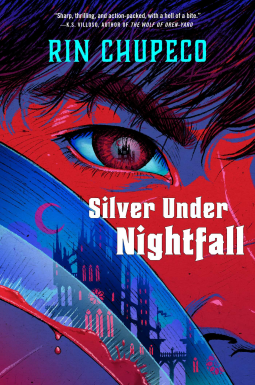
I grabbed this book on the strength of Chupeco’s previousnovel, The Bone Witch, which I enjoyed. The opening engaged meimmediately, with its world of constant friction between humans and vampires,with their own internal divisions. The central character is Remy Pendergast,elite bounty hunter of rogue vampires and social outcast, forced by his powerfulnoble father to provide sexual favors to courtly ladies in exchange for secret information.There’s so much potential there, with action, political tension, and a woundedhero. But that’s not all, for a new breed of vampires arrives on stage,infected with a toxic Rot that renders them impossible to kill, transforminginstead into unstoppable, immortal monstrosities.
I was right with Remy in the opening chapters. My heart wentout to him for his loveless life, his fighting prowess in the service of thosewho neither know nor care for him, and his longing for approval. Then he’s offon a quest to find the source of the Rot and a way to counter it, accompanyinga vampire princess and her fiancé. It’s soon evident there’s a great deal ofsexual tension all around, which leads to the inevitable intimacies. Manyreaders will just love the intricacies of the characters, a polyamorous lovetriad, vampires and more vampires, and a very cool medical mystery.
Alas, I wasn’t one of them. The author could have played onthe trope of vampirism as a metaphor for eroticism or explored how acceptance andvalidation can aid in recovery from sexual abuse, or formed the basis for anextraordinary, cooperative fighting unit. But for me, the book did none ofthese things beyond token mention of Remy’s enduring PTSD and lots of bedaction once he gives in to his lovers. I felt as if I were reading two quitedifferent books, maybe more. The focus jumped around rather than finding aresonance with each genre enhancing and mirroring the other. Still, I waswilling to keep reading, carried along by the strength of the opening andconcept.
About three-quarters through the book, when each event oughtto have jacked up the tension even more, the book ran out of steam. It felt tome as if everything stopped. The three have escaped from the clutches of theevil vampire and for the moment, all other threats recede while research goeson. Then the city where they’ve taken refuge is about to be swarmed by yet moremobs of Rot-infected vampires, Remy leaves, then changes his mind and comesback. And so forth. All the elements were set up well before in terms ofmention but not in terms of emotional immediacy and growing-ever-closer,escalating danger.
I was left puzzled as to the disconnect between the dynamic,engaging beginning, and the piecemeal experience of the latter part of thebook. This was complicated by a serious challenge to my suspension of disbeliefregarding the ecology of vampires in this world. Various writers have tackledthe question of the minimum sustainable ratios of vampires to humans. Whiletheir solutions vary, they all agree that there need to be quite a few morehumans than vampires, anywhere from 1 vampire per 15,000 to 1 per 100,000,depending on how frequently vampires feed (and a bunch of other factors). I hadtrouble wrapping my mind around the siege where hundreds or thousands ofvampires, original, newly turned, and Rot-infected, form a ravening horde. Iwonder if this is a case in which the author had already strained my credulity,whereas if I had not had occasion to question the world-building, I might nothave had a problem with it.
As I said before, other readers may not have these issues,but may instead love the complex world, polyamorous bisexual romance, andaction, not to mention vampires and a very nifty weapon called Breaker. Ifthese appeal to you, give the book a try.
August 14, 2023
Trojan Planets, Diamond Stars, and Other Astronomical Wonders

Astronomers have discovered the first evidence of ultra-rare 'Trojan' planets: two sibling planets bound on the same orbit around the same star.
The potential co-orbiting planets, dancing around the young star PDS 70 roughly 370 light-years away, consist of a Jupiter-size planet and a cloud of debris — possibly the shattered remains of a dead planet, or the gathering building blocks of one yet to be born.
Trojan planets get their unusual name from the two asteroid clusters seen around Jupiter, which, upon their discovery, were split into Greeks and Trojans (the opposing sides of the mythical Trojan War in Homer's Iliad) based on their proximity to the gas giant's gravitationally stable Lagrange points.
Lagrange points are places in a solar system where the gravitational pulls of a star and an orbiting planet balance out the motion of an object's orbit, trapping the object so that it moves in lock-step with the planet.
A White Dwarf is Starting to Crystallize into Diamond

White dwarfs are truly strange objects. After a lifetime of billions of years of fusion, they transform themselves into something else completely different. They transition from blazing balls of plasma to degenerate lumps of carbon that eventually crystallize into diamonds that last for unimaginably long time periods.
It takes a quadrillion years for a white dwarf to crystallize, and since the Universe is not even 14 billion years old, astronomers will never spot a fully crystallized one. But this research removes some of the mystery by finding one that’s just starting to become a cosmic diamond. Curious astronomers will study more of these bizarre stellar remnants, and one day, we may know exactly how and when something so strange can happen.
A skyscraper-size asteroid flew closer to Earth than the moon — and scientists didn't notice until 2 days later

Now dubbed 2023 NT1, the roughly 200-foot-wide (60 meters) space rock sailed past our planet on July 13, traveling at an estimated 53,000 mph (86,000 km/h), according to NASA. However, because the rock flew toward Earth from the direction of the sun, our star's glare blinded telescopes to the asteroid's approach until long after it had passed.
Astronomers didn't catch wind of the building-size rock until July 15, when a telescope in South Africa — part of the Asteroid Terrestrial-impact Last Alert System (ATLAS), an array of telescopes designed to spot asteroids several days to weeks before any potential impact — caught the rock making its exit from our neighborhood. More than a dozen other telescopes also spotted the rock shortly afterward, according to the International Astronomical Union's Minor Planet Center.
Hundreds of 'ghost stars' haunt the Milky Way's center. Scientists may finally know why

"Planetary nebulas offer us a window into the heart of our galaxy and this insight deepens our understanding of the dynamics and evolution of the Milky Way's bulge region," University of Manchester astrophysicist Albert Zijlstra said in a statement.
Studying 136 planetary nebulas in the thickest part of the Milky Way, the galactic bulge, with the Very Large Telescope (VLT), the team discovered that each is unrelated and comes from different stars, which died at different times and spent their lives in different locations.
The researchers also found that the shapes of these planetary nebulas line up in the sky in the same way. Not only this, but they are also aligned almost parallel to the plane of the Milky Way.



